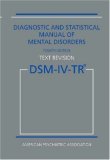| iPsychology
|
|
DSM-IV™ Multiaxial System ( Made easy )
The Diagnostic and Statistical Manual of Mental Disorders (DSM) is the standard classification of mental disorders used by mental health professionals in the United States. It is intended to be applicable in a wide array of contexts and used by clinicians and researchers of many different orientations (e.g., biological, psychodynamic, cognitive, behavioral, interpersonal, family/systems). DSM-IV has been designed for use across settings, inpatient, outpatient, partial hospital, consultation-liaison, clinic, private practice, and primary care, and with community populations and by psychiatrists, psychologists, social workers, nurses, occupational and rehabilitation therapists, counselors, and other health and mental health professionals. It is also a necessary tool for collecting and communicating accurate public health statistics. The DSM consists of three major components: the diagnostic classification, the diagnostic criteria sets, and the descriptive text. The diagnostic classification is the list of the mental disorders that are officially part of the DSM system. "Making a DSM diagnosis" consists of selecting those disorders from the classification that best reflect the signs and symptoms that are afflicting the individual being evaluated. Associated with each diagnostic label is a diagnostic code, which is typically used by institutions and agencies for data collection and billing purposes. These diagnostic codes are derived from the coding system used by all health care professionals in the United States, known as the ICD-9-CM. For each disorder included in the DSM, a set of diagnostic criteria that indicate what symptoms must be present (and for how long) in order to qualify for a diagnosis (called inclusion criteria) as well as those symptoms that must not be present (called exclusion criteria) in order for an individual to qualify for a particular diagnosis. Many users of the DSM find these diagnostic criteria particularly useful because they provide a compact encapsulated description of each disorder. Furthermore, use of diagnostic criteria has been shown to increase diagnostic reliability (i.e., likelihood that different users will assign the same diagnosis). However, it is important to remember that these criteria are meant to be used a guidelines to be informed by clinical judgment and are not meant to be used in a cookbook fashion. Finally, the third component of the DSM is the descriptive text that accompanies each disorder. The text of DSM-IV systematically describes each disorder under the following headings: "Diagnostic Features"; "Subtypes and/or Specifiers"; "Recording Procedures"; "Associated Features and Disorders"; "Specific Culture, Age, and Gender Features"; "Prevalence"; "Course"; "Familial Pattern"; and "Differential Diagnosis." DSM-IV (Diagnostic and Statistical Manual of Mental Disorders, Fourth Edition), published in 1994 was the last major revision of the DSM. It was the culmination of a six-year effort that involved over 1000 individuals and numerous professional organizations. Much of the effort involved conducting a comprehensive review of the literature to establish a firm empirical basis for making modifications. Numerous changes were made to the classification (i.e., disorders were added, deleted, and reorganized), to the diagnostic criteria sets, and to the descriptive text based on a careful consideration of the available research about the various mental disorders. In anticipation of the fact that the next major revision of the DSM (i.e., DSM-V) will not appear until 2010 or later (i.e., at least 16 years after DSM-IV), a text revision of the DSM-IV called DSM-IV-TR was published in July 2000. The primary goal of the DSM-IV-TR was to maintain the currency of the DSM-IV text, which reflected the empirical literature up to 1992. Thus, most of the major changes in DSM-IV-TR were confined to the descriptive text. Changes were made to a handful of criteria sets in order to correct errors identified in DSM-IV. In addition, some of the diagnostic codes were changed to reflect updates to the ICD-9-CM coding system adopted by the US Government.  . . . . |
